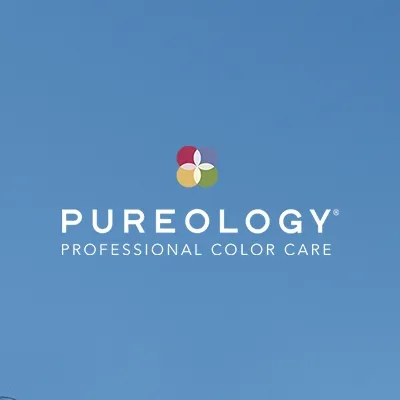
Pureology
Learn more about our scoring →
About Pureology
Pureology operates as a premium haircare brand within L'Oréal's professional products division, specializing in sulfate-free, color-safe formulations for the salon and retail markets. The brand has positioned itself at the intersection of high-performance hair care and ethical beauty standards, maintaining vegan formulations and cruelty-free practices across its entire product portfolio.
The brand's sustainability approach demonstrates strength in ingredient transparency and packaging innovation, utilizing substantial amounts of post-consumer recycled plastic bottles and FSC-certified packaging materials. However, performance varies significantly across environmental and social dimensions, with documented water efficiency improvements contrasting against limited climate strategy disclosure and absent biodiversity programs.
As part of L'Oréal's broader sustainability framework, Pureology benefits from corporate-level environmental initiatives while maintaining brand-specific commitments to vegan formulations and cruelty-free standards. The brand's sustainability narrative reflects both the advantages of corporate backing and the challenges of achieving comprehensive sustainability leadership within a large multinational beauty conglomerate.
The Good Stuff
Where Pureology appears to be making meaningful progress. We cross-referenced these findings with multiple independent sources.
Independent Cruelty-Free Verification
Certified cruelty-free through independent third-party verification with comprehensive no-testing policies covering ingredients and finished products across all manufacturing operations
Post-Consumer Recycled Packaging Leadership
Pioneering sustainable packaging with high levels of post-consumer recycled plastic bottles and FSC-certified cartons, while eliminating plastic wrap across product lines
Manufacturing Water Efficiency
Documented significant reduction in water usage through steam sanitation technology implementation and measurable efficiency improvements per production batch
The Reality Check
Areas where the publicly available data gets murky, incomplete, or concerning. We're transparent about the limitations of our analysis.
Supply Chain Transparency Void
No disclosed supplier audits, traceability programs, or supplier listings available for manufacturing operations or ingredient sourcing verification
Climate Strategy Verification Gap
Manufacturing efficiency improvements reported without science-based emissions targets or third-party climate strategy validation
Biodiversity Program Absence
No public disclosures or partnerships related to biodiversity protection, habitat restoration, or wildlife conservation initiatives
Pureology's
Impact Aura
A visual representation of Pureology's positive impact
across People, Planet and Animals
Each colored area represents the brand's performance in that sustainability category. The size and intensity of each blob corresponds to their score—larger, more vibrant areas indicate stronger performance.
Our Research
Key findings from our comprehensive analysis of Pureology's sustainability performance across People, Planet & Animals impact.
Positive Impact on People
Research Highlights
- Ingredient safety verified through third-party databases with sulfate-free, paraben-free, and vegan formulations
- Marketing integrity supported by independent cruelty-free verification and transparent product claims
- Social impact demonstrated through substantial donations to National Ovarian Cancer Coalition and partnership with Global Green USA
- Labor practices lack independent verification or fair labor certifications across manufacturing operations
- Supply chain transparency absent with no disclosed supplier audits, traceability programs, or supplier listings
Evidence Strength
Strong documentation for ingredient safety and marketing claims, significant gaps in labor and supply chain verification
Positive Impact on Planet
Research Highlights
- Packaging innovation achieved through high levels of post-consumer recycled plastic bottles and FSC-certified cartons
- Water stewardship includes documented significant reduction in usage through steam sanitation technology
- Chemical responsibility demonstrated through Cradle to Cradle Silver certification at product level
- Climate action shows manufacturing efficiency improvements but lacks science-based emissions targets
- Biodiversity protection programs are absent from public sustainability disclosures
Evidence Strength
Excellent documentation for packaging and water initiatives, limited verification for climate strategy and biodiversity programs
Positive Impact on Animals
Research Highlights
- Rigorous cruelty-free certification through independent third-party verification and comprehensive testing policies
- Complete vegan formulation across entire product portfolio with transparent ingredient sourcing
- Wildlife conservation initiatives are notably absent from sustainability program disclosures
- Sustainable sourcing protocols lack transparency despite vegan product certification
- Conservation funding and habitat protection partnerships not disclosed in public communications
Evidence Strength
Comprehensive third-party verification for cruelty-free and vegan claims, limited documentation for wildlife and conservation initiatives
See the Receipts
We don't just make claims—here are the official certifications that prove Pureology's sustainability commitments.
Frequently Asked Questions
Is Pureology sustainable?
Pureology demonstrates strong sustainability performance in specific areas, particularly cruelty-free practices and packaging innovation using substantial amounts of post-consumer recycled materials. However, the brand shows gaps in climate strategy transparency and biodiversity initiatives, indicating mixed sustainability performance across environmental and social dimensions.
Is Pureology cruelty-free and vegan?
Yes, Pureology maintains rigorous cruelty-free certification through independent third-party verification and offers complete vegan formulations across its entire product portfolio. The brand maintains transparent no-testing policies for ingredients and finished products with documented ethical standards.
What makes Pureology's packaging sustainable?
Pureology demonstrates commitment to sustainable packaging through substantial use of post-consumer recycled plastic bottles and FSC-certified cartons with recycled fiber content. The brand has eliminated plastic wrap and uses responsibly sourced packaging materials across its product lines.
Does Pureology use clean ingredients?
Pureology formulates with sulfate-free, paraben-free, and mineral oil-free ingredients, achieving Cradle to Cradle Silver certification at the product level. The brand maintains complete vegan formulations with ingredient safety verified through third-party databases.
What is Pureology's environmental impact?
Pureology shows documented water efficiency improvements including significant usage reduction through manufacturing innovations. However, the brand lacks disclosed science-based climate targets and biodiversity protection programs, indicating mixed environmental performance.
Is Pureology ethically sourced?
Pureology maintains transparent vegan ingredient sourcing and cruelty-free practices, though the brand lacks disclosed supplier audits or independent labor certifications. Supply chain transparency remains limited despite ethical product formulations.
How does Pureology compare to other haircare brands?
Pureology demonstrates leadership in cruelty-free certification and sustainable packaging innovation, while showing performance gaps in climate strategy disclosure and biodiversity initiatives compared to comprehensive sustainability leaders in the beauty industry.
Ready to Shop Pureology?
Find Pureology products through our trusted retail partners
The Bottom Line
Pureology demonstrates strong sustainability leadership in cruelty-free practices and packaging innovation, with complete vegan formulations and notable use of post-consumer recycled materials. However, the brand shows significant gaps in climate strategy transparency and biodiversity initiatives, indicating selective rather than comprehensive sustainability commitment.


